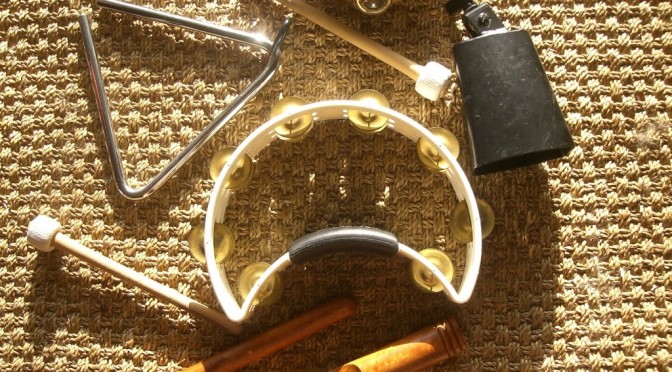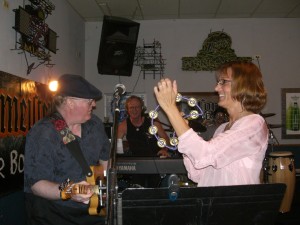Rhythm is the heart beat of music, pure and simple. You can make danceable music with a drum and one note, but you can’t make music with notes and no rhythm.
In a classical solo performance, of course, you can speed up and slow down all you want (well, within reason). In an ensemble, the group leader or conductor will lead the group through rhythm changes so you stay together through them. Accelerandos and ritardandos are part of the classical style and the audience and the critics will make their judgment, and that will be that.
But ensemble players in pop and jazz music have to stay steady together, without a conductor (even if there is a group leader, you’re still expected to maintain tempo and rhythm on your own.) Indeed, pop players can drive their musical trains right off the tracks if they don’t stay steady. And I’ m not just talking about beginners and kids here.
Here are some reminders… for all of us.
Counting it in: Some people have a knack for this, most don’t. If you’re one of the majority, and you are leading a song, here’s how to count everyone in so they start at the same time at the right tempo:
- First, get a strong phrase of the song in your head and start singing it in your head at the tempo you want to play it.
- Add finger snapping to find the beat.
- THEN — and only then — count in a full measure. Be sure your vocal tone and counting style leave no doubt as to where people are supposed to come in.
Learn the Arrangement! Don’t use how you think the song goes as the backdrop in your head to lead you through playing it. Not every band plays every song just like “it is on the record.” They may drop weird little rhythmic variations for simplicity’s sake, ditch a solo, or repeat solos to give more people a chance. You’ve got to listen to the people you are playing with, and to a metronome in your head — not try to copy “the way the song goes.”
Tapping. Keep the rhythm with a body part (depending on your instrument): foot tapping, finger snapping (for singers), nodding your head, whispering the counts.
LIisten — and that means to each other, not just to yourself. I’ve been in band situations where everyone was nodding and foot tapping and feeling like they were in a groove, and they were — that is, each person was in his own groove. The overall sound was a mushed mess because it was like everyone was playing in a bubble.
Look at each other. Make eye contact, nod, FEEL the beat together so that your counts are the same as your band member’s counts. If everyone is speeding up and you aren’t, you may be right — but YOU are the one who will sound off.
Drummers: DON’T SPEED UP!!!!
Bass Players: Keep it simple until you’ve got everyone on board.
Follow the Leader. If the groove seems off, someone needs to pull it back in. Drummers can stress the downbeats, keyboard players can stop playing with one hand and start conducting, the bass player can hammer the ones and the fives on the downbeats. Simplify. Drop the complex syncopations. Guitarists and pianists should drop the little in-between-the-beats upstrokes and fills. When everyone is hitting the main beats together, then you can let the music evolve into more complexity. But if you’re off, rein it in.
Count! If you’re playing a song from a lead sheet, you need to know how many beats each chord change is. If the changes are uneven or unusual, or there’s a little half measure in there somewhere, put a little note in your lead sheet. Not all songs go in even four measure phrases.
Steady as she goes. If you are in a rock/pop/jazz group and the singer or lead soloist is bending the rhythm (holding back or anticipating the bar lines) — YOUR job is to keep the steady beat, even if that means you are not with the soloist. This is the OPPOSITE of what classical musicians do: Classical accompanists, anticipate (or rehearse) the soloist’s ritardandos and stay with the soloist. Pop and jazz rhythm sections stay with the rhythm, giving the soloist a steady place to come back to at the end of the phrase. If you stay with the soloist instead of with the rhythm section, you will drive the train right off the tracks. The only exceptions are endings (and, very occasionally, transitions to bridges) where ritardandos are rehearsed.
Work at home with a metronome. To practice soloing, count off the measures so you fit your solo into the time allotted for each chord. You can also record (for example, on a keyboard) the backing chords, played in strict rhythm, and practice soloing over them and hitting the changes of your solo at the right time.
Bottom line: You (and your listeners) shouldn’t need a search light to find the beat! By listening to each other and prioritizing rhythm, you can help your bad achieve a tighter sound and a better groove.


